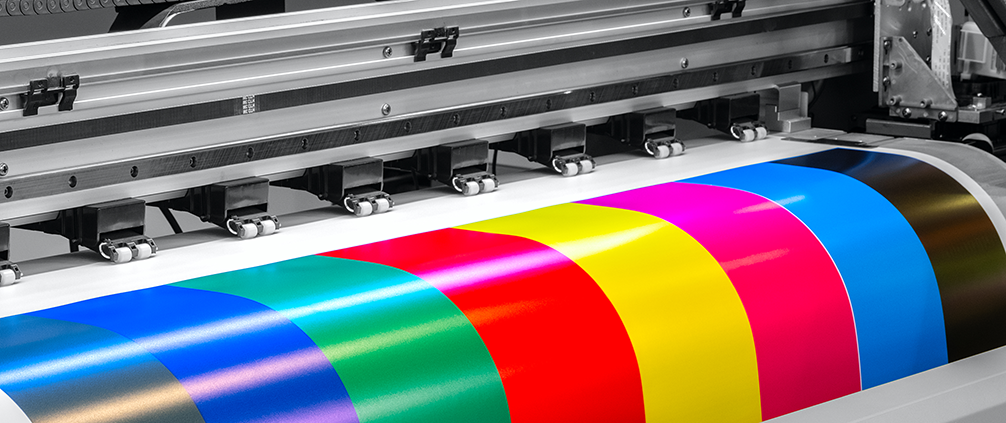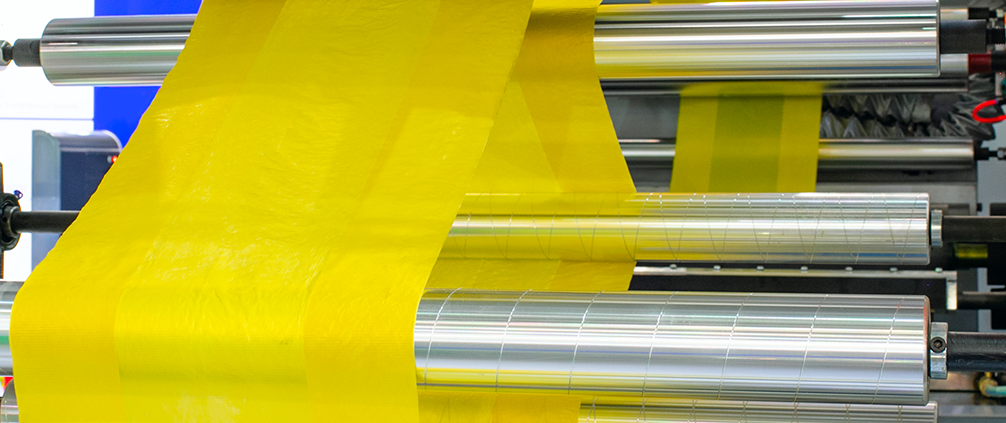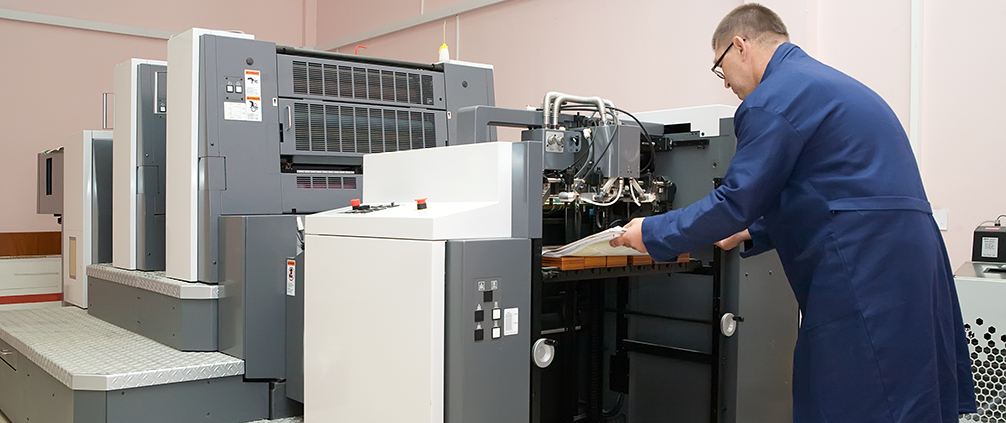Here at ESC Packaging, we take care of everything, from concept to delivery. But that doesn’t mean you won’t have questions, and we understand that the printing techniques we use every day, may not be as familiar to you.
So, we thought we would write a blog post focused on demystifying some of these techniques, to help you understand what solutions are best for you and your business. We know it might not seem like the most exciting topic (unless you are as passionate about packaging as we are!), but we promise, we will keep it short and sweet. You never know, by the end of this article, you might find yourself as fascinated by flexographic, enthusiastic about embossing, hooked on hot-foiling, or delighted about digital as we are…OK, we’ll stop with the alliteration, but you get the picture.
What are the main printing techniques that we use?

Digital Printing
A modern, direct printing process, using digital files sent to a printer, to print an image or text directly on to materials.

Flexographic Printing
Also known as flexo printing, this is a popular method of printing, commonly used for large-volume printing jobs.

Lithographic Printing
Also known as litho printing or offset lithography, this indirect printing method uses a flat metal plate to transfer ink.

Embossing
A printing technique commonly used in packaging to create a raised or 3D effect on the surface of the material.

Screen Printing
A printing technique that involves using a stencil or a "screen" to transfer ink onto a surface.

Spot UV Printing
Also known as litho printing or offset lithography, this indirect printing method uses a flat metal plate to transfer ink.
Open each tab to find out more about these techniques.
A modern, direct printing process, using digital files sent to a printer, to print an image or text directly on to materials. No printing plates or other physical printing equipment are required – the process is controlled by a computer, which sends precise instructions to the printer.
What is it used for?
A wide variety of printed materials, including:
- Boxes
- Gift cards
- Brochures
- Business cards
- Flyers/posters
- Books
It is best suited to…
Short-run or custom print jobs, as it allows for greater flexibility and customisation than traditional printing methods.
Key advantages:
- It’s ability to produce high-quality prints with vibrant colours and sharp details, on a range of materials.
- It is a more eco-friendly printing method, as it generates less set up waste, is easy to create a trial sample and does not require the use of chemicals or solvents.
- High quality prints can be produced quickly and with greater flexibility and customization.
Also known as flexo printing, this is a popular method of printing, commonly used for large-volume printing jobs. It is a form of relief printing which needs a rubber printing plate made, with raised images and text that transfer ink onto a substrate.
The plate is wrapped around a large metal printing cylinder, which rotates and transfers ink onto the substrate.
What is it used for?
Flexographic printing is used in a variety of applications, including:
- Packaging,
- Labels,
- Corrugated boxes,
- Newspapers and magazines.
It is best suited to…
Printing large quantities of materials, thanks to its high-speed printing capabilities and efficient use of ink.
Printing on non-porous surfaces, such as polythene, plastic and metallic materials.
It is ideal for printing on items like polythene carrier bags, or food packaging films, where durability and resistance to moisture are vital.
Key advantages:
- A versatile, high speed printing process
- Capable of producing high-quality prints with vibrant colours, fine details, and sharp lines.
Also known as litho printing or offset lithography, this indirect printing method uses a flat metal plate to transfer ink.
In lithographic printing, the plate used for printing is typically made of a thin, flat sheet of metal, usually aluminum (low cost and easy to recycle).
Once the plate is prepared, it is mounted onto a printing press. Most of our mills use Heidelberg machines which are highly regarded within our industry. Vegetable based Ink is applied to the raised image area of the plate, and the plate is pressed against a rubber blanket, which then transfers the ink to the paper or other substrate.
What is it used for?
A variety of applications, including:
- Brochures,
- Flyers,
- Books,
- Magazines
It is best suited to…
Printing high-quality, detailed images with vibrant colours and sharp lines. It is also capable of printing on a wide range of substrates, including paper, cardstock, hard sheet plastics, and metals. We use this technique for many of our luxury gift bags and boxes.
It is often used for large-scale printing runs due to its efficiency and ability to produce consistent results at high volumes, however is also great for smaller to mid-range prints on materials such as cardboard.
Key Advantages:
- It is a versatile and precise printing method that produces high-quality prints with excellent colour accuracy and detail.
- It can accommodate pantone and CMYK full colour process designs.
A printing technique commonly used in packaging to create a raised or 3D effect on the surface of the material. This effect is achieved by pressing a dye onto the material from the back, which creates a raised design or pattern on the front.
There are two main types of embossing: blind embossing (raised design without any additional colour or texture) and foil embossing (using a thin layer of foil to add colour and shine).
What is it used for?
Adding visual interest or to draw attention to a specific part of the packaging design, such as a company logo or product name.
We call this a finishing touch, as it is often used in combination with other printing techniques, such as hot foil stamping, spot UV coating, and matte or gloss finishes, to create a more complex and visually appealing design.
Key advantages:
- It adds a WOW factor, by creating a tactile experience for the consumer, which can enhance the overall user experience and make the product more memorable.
- Embossing can be applied to a wide range of packaging materials, including paperboard, cardboard and some plastics.
A technique used to add metallic or holographic designs to various surfaces, including paper and cardboard.
The process involves using a machine that uses heat and pressure to transfer a foil material onto the surface of the material being decorated. The heat and pressure cause the foil to transfer the design onto the surface of the material, resulting in a metallic or holographic finish.
What is it used for?
Hot foiling is commonly used for a variety of applications, including adding decorative designs to:
- Luxury goods,
- Business cards,
- Carrier bags
- Boxes and other packaging.
It is best suited for…
Hot foiling is better suited for large runs and projects while cold foiling is better suited for smaller orders.
Key Advantages:
- It is a popular choice because it can add a high-end, luxurious look to a product,
- It can used to create intricate designs that would be difficult or impossible to achieve with other printing techniques.
Disadvantages:
Hot foil can prevent the item from being recycled in many cases, so less suitable for “Eco-Friendly” products – in which case an alternative option would be to use a metallic ink and embossing technique to achieve a similar but more environmentally friendly finish.
A printing technique that involves using a stencil or a “screen” to transfer ink onto a surface. The screen is made up of a fine mesh material, stretched tightly over a frame. A stencil is then created by blocking out certain areas of the screen to prevent ink from passing through.
This can be a manual process by human hand or some of our factories use a machine called an Octopus. The ink is then cured, either by heat or by exposure to UV light, to create a permanent print, meaning the product can be used and washed.
What is it used for?
It is often used to create:
- Custom t-shirts,
- Fabric carrier bags,
- Posters,
- Signs, and other promotional materials
Key advantages:
- A printing technique that can produce high-quality, long-lasting prints in large quantities.
- Prints designs onto a variety of surfaces, including fabrics such as cotton, jute, juco, NWPP or paper, plastic, metal and glass.
Spot UV (Ultra-Violet) is a printing technique used to enhance specific areas of a printed piece by creating a high gloss or matte finish on top of the ink.
This creates a contrast between the shiny, raised areas and the flat, uncoated areas of the printed item, which can be used to create a striking visual effect.
To apply Spot UV, a printing press is used to apply a clear varnish coating in specific areas of the printed piece. This coating is then cured using ultraviolet light, which hardens the varnish and creates a glossy or matte finish.
What is it used for?
- Marketing and advertising to draw attention to key elements of a design, such as logos, product images, or text.
- It can also be used to create tactile effects by applying the coating in a raised pattern, such as a logo or textured background.
Key Advantages:
- Spot UV can be applied to a wide range of printed materials, including paper and board products, such as bags, boxes and cards, brochures, book covers, and other packaging.
- It can be used in combination with other techniques, such as hot foiling or embossing, to create an eye-catching design.
This can be a manual process by human hand or some of our factories use a machine called an Octopus. The ink is then cured, either by heat or by exposure to UV light, to create a permanent print, meaning the product can be used and washed.
What is it used for?
It is often used to create:
- Custom t-shirts,
- Fabric carrier bags,
- Posters,
- Signs, and other promotional materials
Key advantages:
- A printing technique that can produce high-quality, long-lasting prints in large quantities.
- Prints designs onto a variety of surfaces, including fabrics such as cotton, jute, juco, NWPP or paper, plastic, metal and glass.
We hope you found this helpful! Remember, we are only a phone call or email away if you have any questions, and are always happy to meet in person to chat through your requirements and explain anything further.
Get in touch:
Email us: sales@escpackaging.co.uk
Call us: 01383 418610
Have a great week, and keep an eye out for our next post!
All the best,
Carri and the ESC team.
